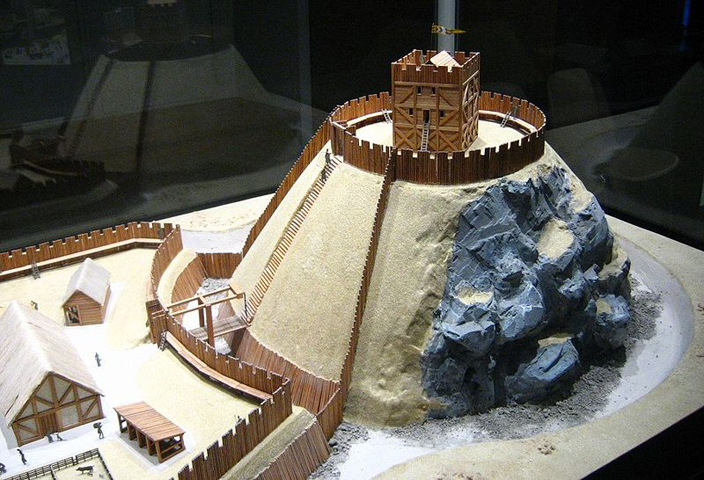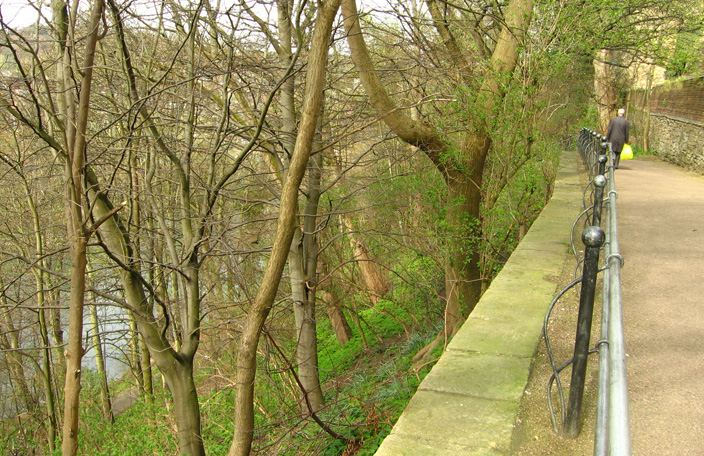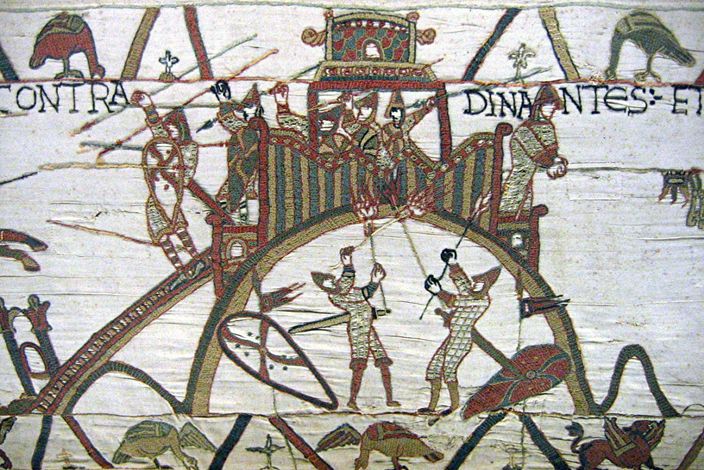The Normans introduced new forms of military architecture, among the most important of which was the motte and bailey castle. This consisted of two main components: the motte, an artificial mound atop which was built a fortified tower called a keep, and a bailey, which was an enclosure connected to the motte. Many castles of this type also had a ditch around the bailey.
Building Fortifications Quickly
Many early motte and bailey castles were built of timber, which meant that they could be constructed quickly (in just a few weeks). This would have been especially important in the early days of the Norman Conquest, as Norman forces moved around the country to control pockets of resistance.
It is thought that as many as 1,000 wooden motte and bailey castles were constructed by the Normans in England.

Model of a typical motte and bailey castle, showing the artificial mound surmounted by a wooden keep (the motte) and the fenced enclosure surrounded by a ditch (the bailey).
Choosing a Site
Castle sites were well chosen to maximise their defensive value – bends in the river, as is the case in Durham, were ideal because the river provided an additional line of defence. In Durham’s case, the steep river banks would have been a further deterrent to attackers, making the site all the more valuable. Sources of fresh water were also essential for their own sake – ensuring that the inhabitants of a castle would have constant supply of drinking water.

The steep river banks of the Durham Peninsula made it an ideal defensive site for a castle. Stone walls constructed in the 12th century added to this natural line of defence.
Construction
Mottes were artificial mounds constructed by piling consecutive layers of earth and stones and then compacting them. The stones were essential to ensure that the motte would remain solid and also helped with drainage. The sides of the motte were often covered with a thick layer of clay – this prevented erosion and made it even harder for invaders to get up to the keep at the top, especially during or after wet weather. Usually, the keep was only accessible by a wooden staircase, or a flying bridge, both of which could easily be destroyed when the keep was under threat of attack.
A ditch would usually have been dug out around the bailey to create a dry moat – the soil from the ditch would have been used to help construct the motte.
How a Motte and Bailey Castle Functioned
The Bailey
The bailey would have been where most of the day-to-day activities of a castle would take place – the stables, kitchens, storerooms, living quarters of the people associated with the castle (soldiers and servants, for example), and perhaps a chapel would have been located there.
The Motte
The lord of the castle would have lived in the keep constructed on top of the motte. In some cases, the keep would be several storeys high. The lowest storey would have been used for services, such as storage or kitchen facilities. Above this would be the primary reception area, or great hall. The uppermost storey would usually house the lord’s private apartments.
The motte served two main functions – it was a look-out spot, given its height, and its keep would serve as the last stronghold in the event of the castle being attacked.

The Bayeux Tapestry, dating from the eleventh century, depicts the Battle of Hastings in 1066. Shown here is a motte and bailey castle being attacked.

